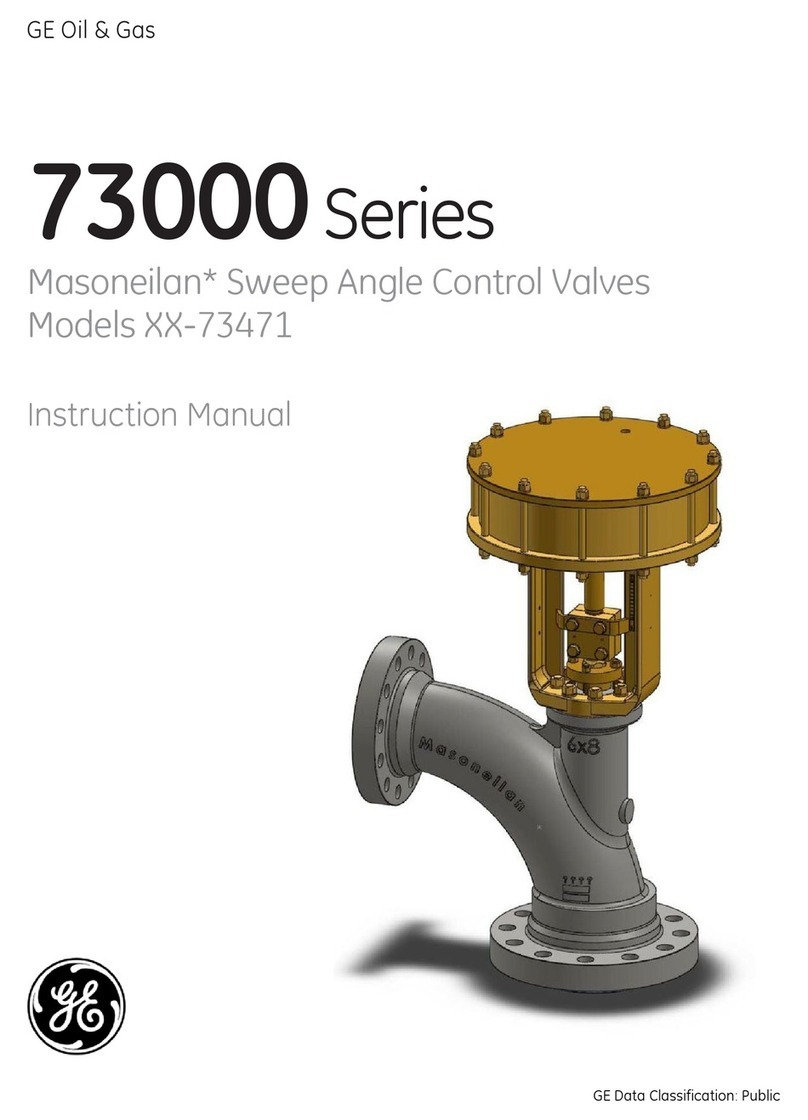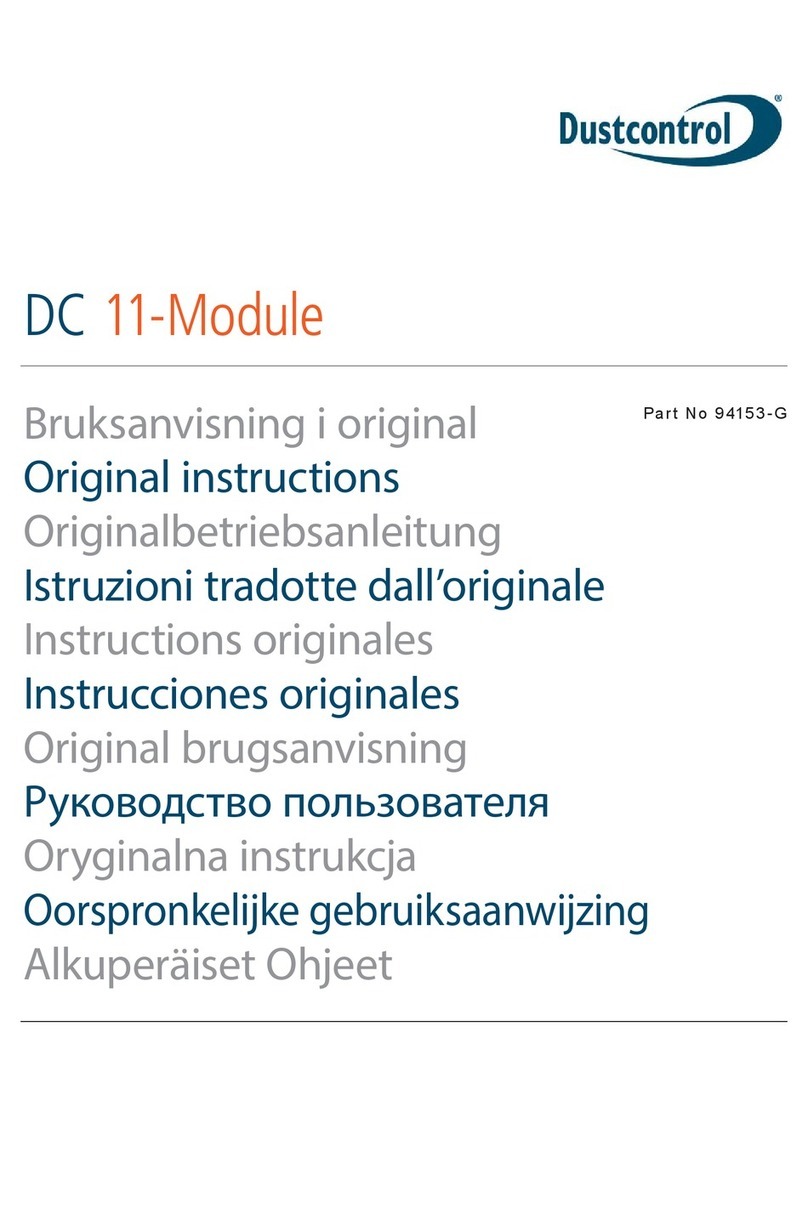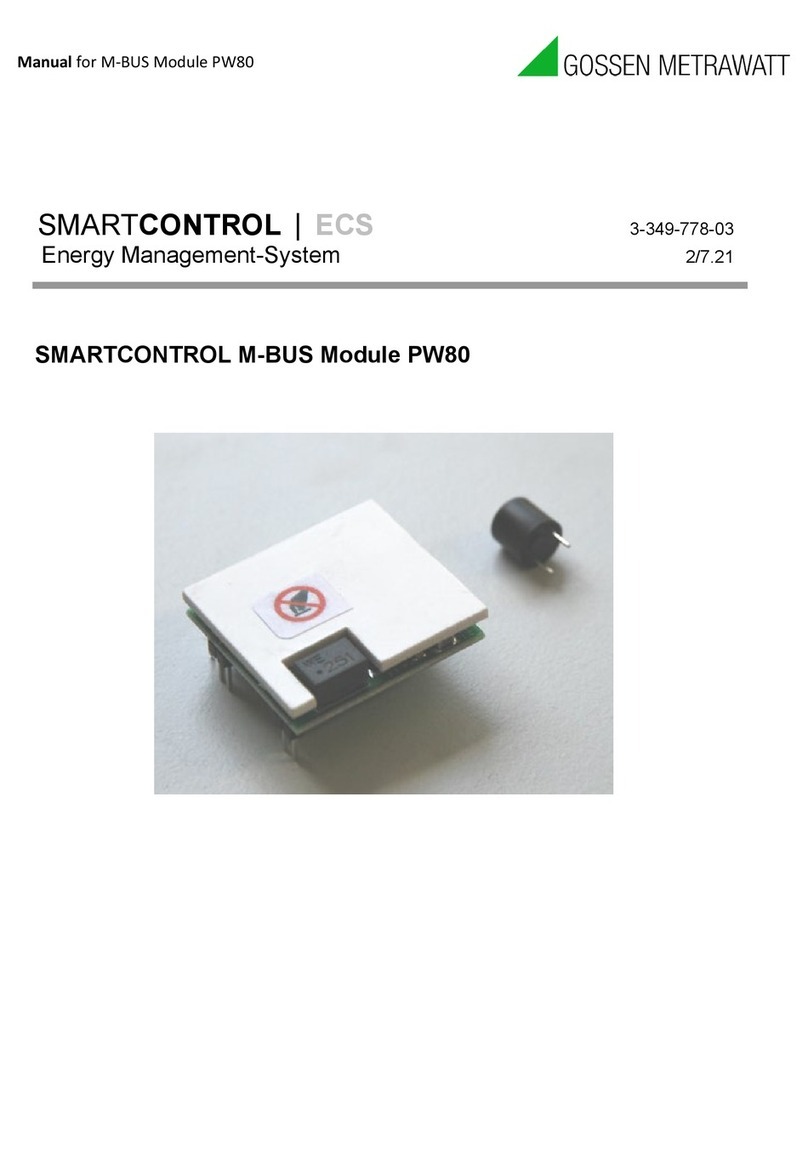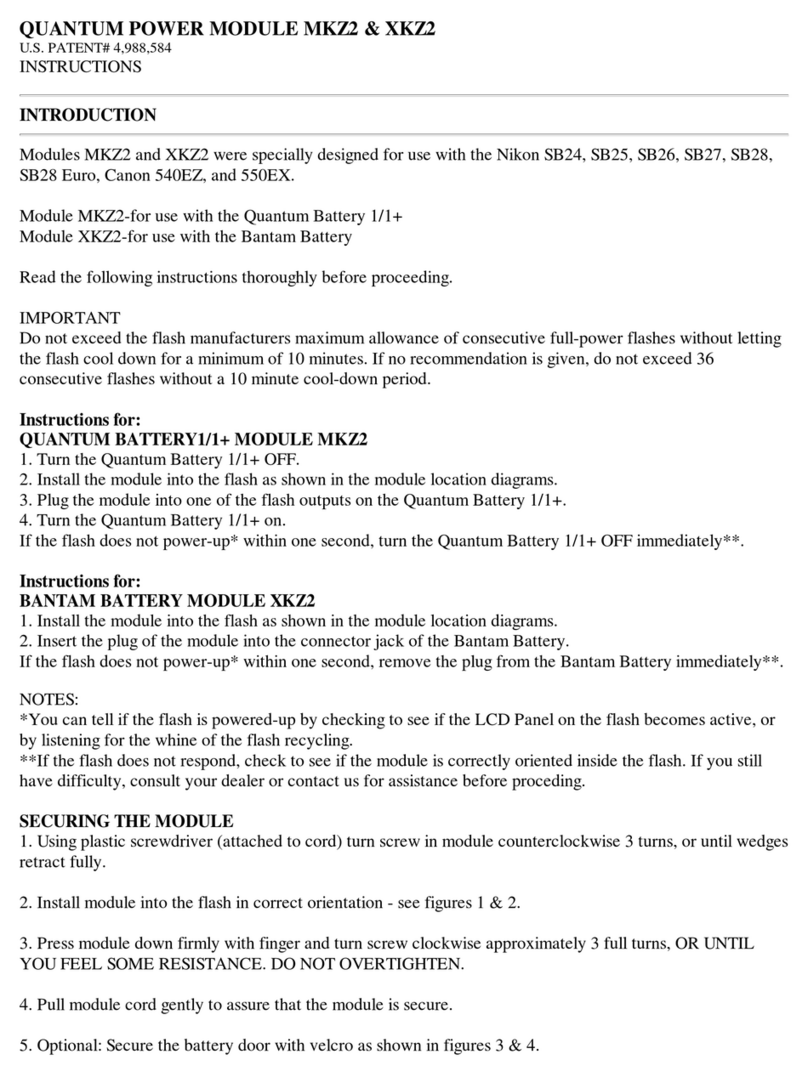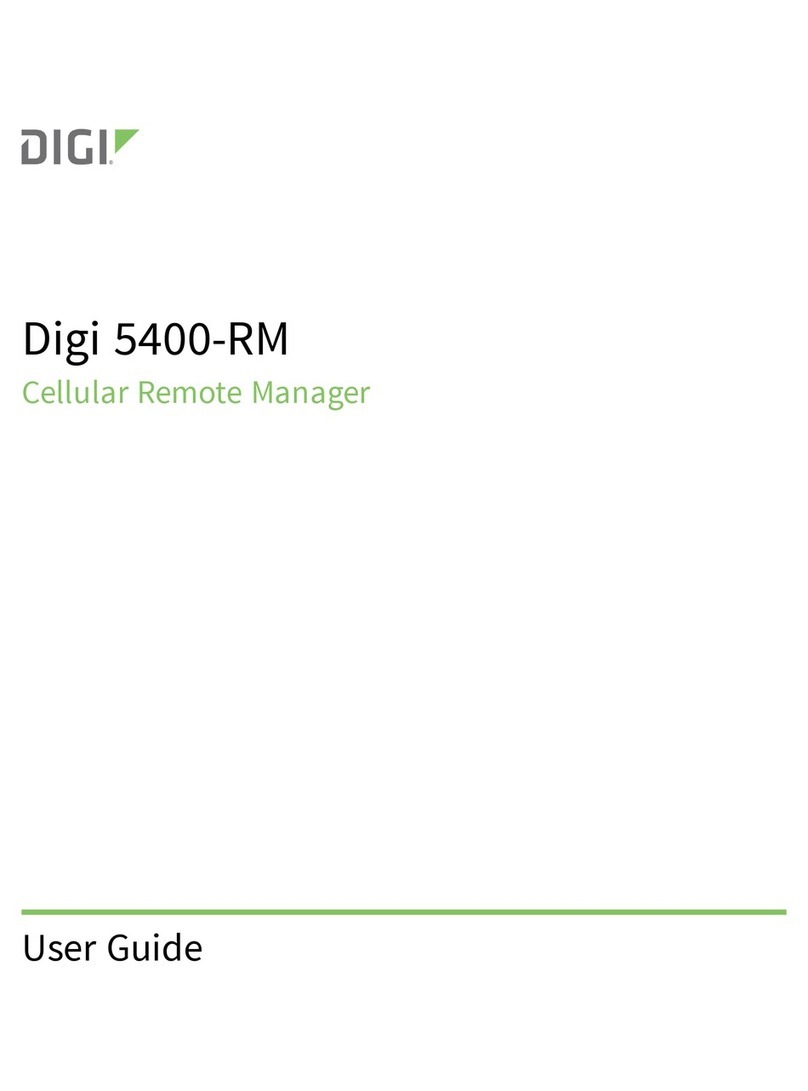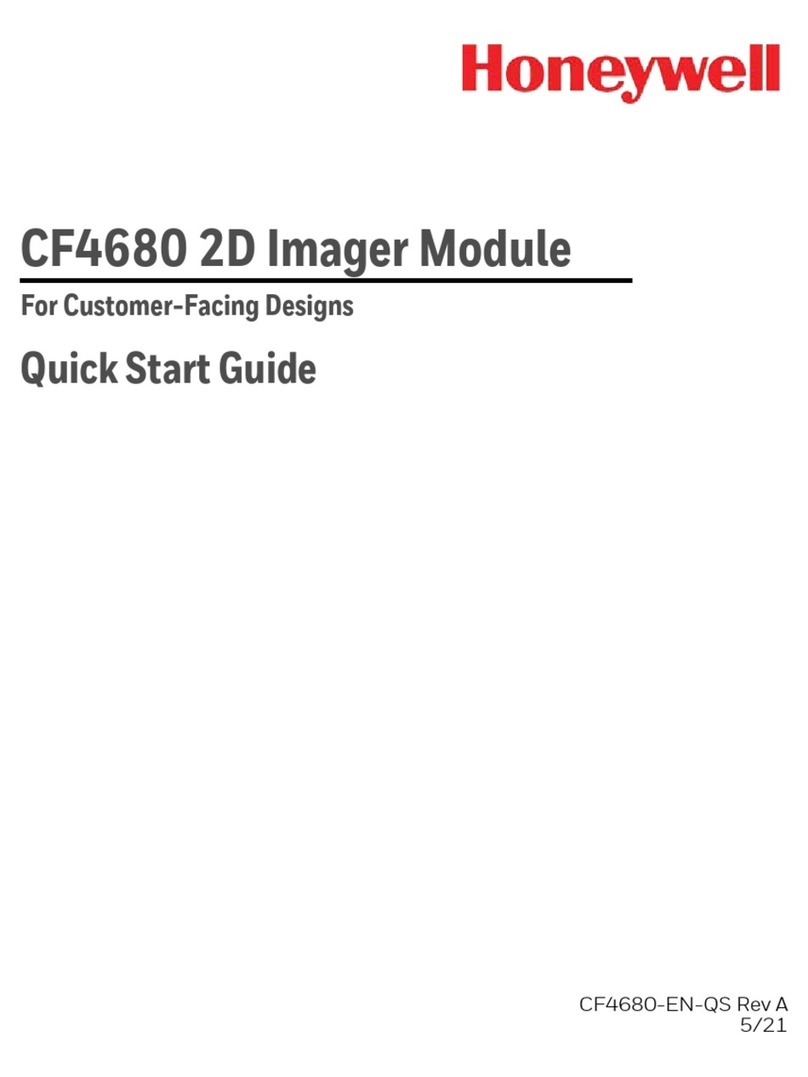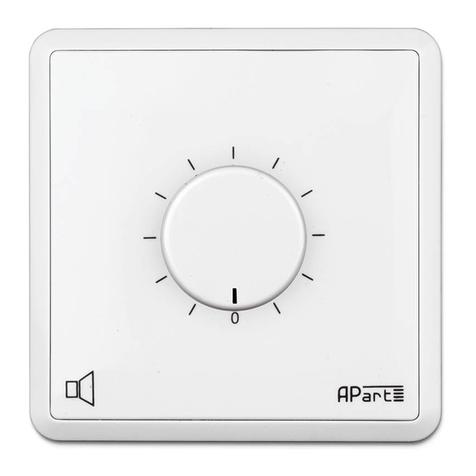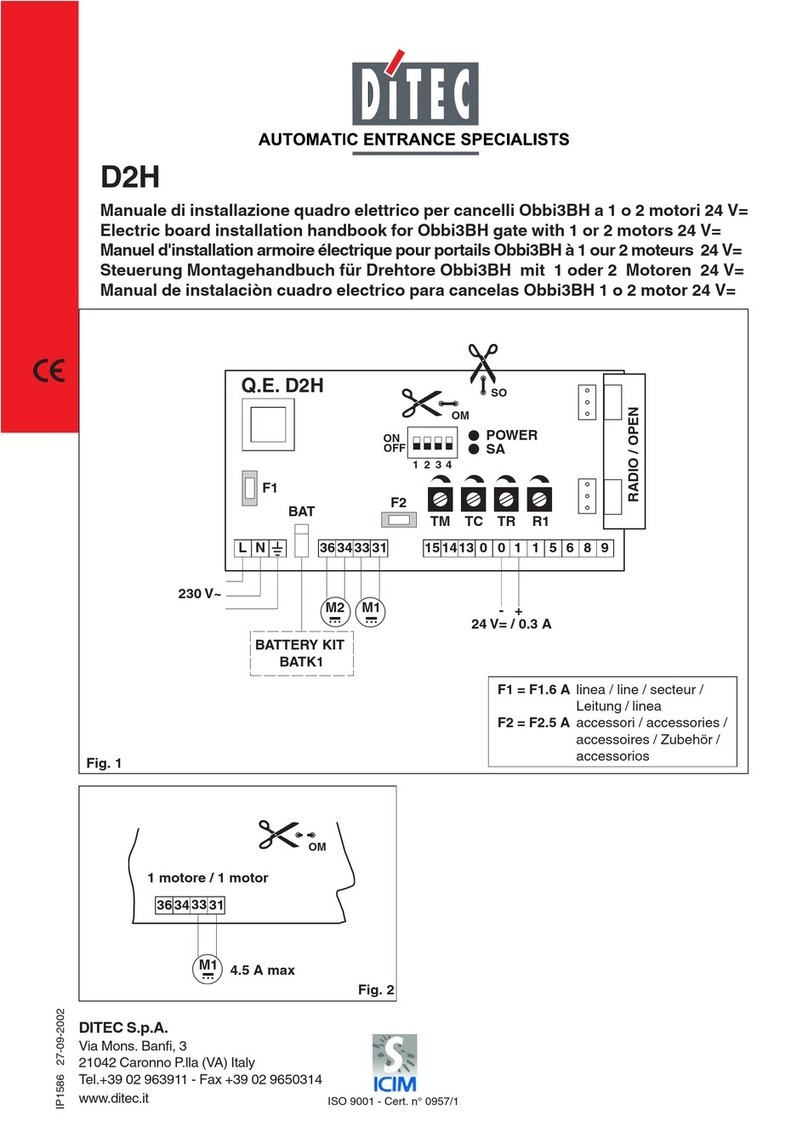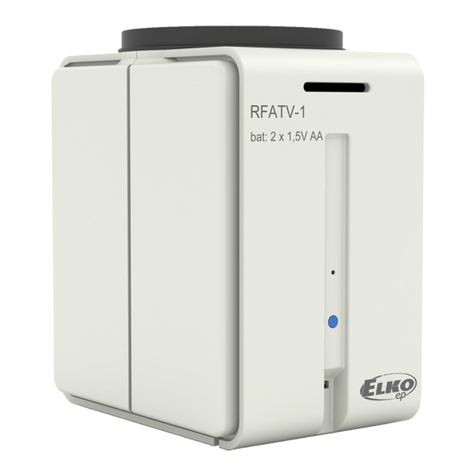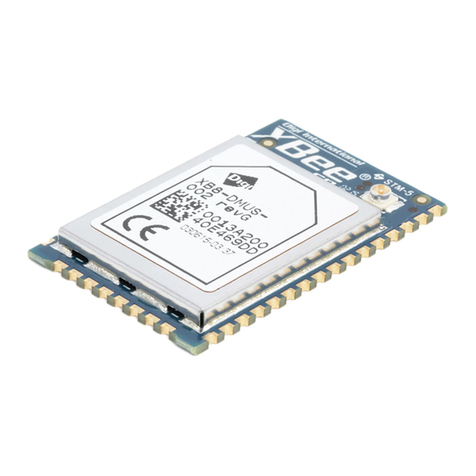GE Oil & Gas Mooney Pilots 20 Series User manual

GE Oil & Gas
Mooney*
Series 20/20S/20H/20HS
Pilots
Instruction Manual
GE Data Classification : Public

2 | GE Oil & Gas © 2015 General Electric Company. All rights reserved.
THESE INSTRUCTIONS PROVIDE THE CUSTOMER/OPERATOR WITH IMPORTANT PROJECT-
SPECIFIC REFERENCE INFORMATION IN ADDITION TO THE CUSTOMER/OPERATOR’S NORMAL
OPERATION AND MAINTENANCE PROCEDURES. SINCE OPERATION AND MAINTENANCE
PHILOSOPHIES VARY, GE (GENERAL ELECTRIC COMPANY AND ITS SUBSIDIARIES AND AFFILIATES)
DOES NOT ATTEMPT TO DICTATE SPECIFIC PROCEDURES, BUT TO PROVIDE BASIC LIMITATIONS
AND REQUIREMENTS CREATED BY THE TYPE OF EQUIPMENT PROVIDED.
THESE INSTRUCTIONS ASSUME THAT OPERATORS ALREADY HAVE A GENERAL UNDERSTANDING
OF THE REQUIREMENTS FOR SAFE OPERATION OF MECHANICAL AND ELECTRICAL EQUIPMENT
IN POTENTIALLY HAZARDOUS ENVIRONMENTS. THEREFORE, THESE INSTRUCTIONS SHOULD BE
INTERPRETED AND APPLIED IN CONJUNCTION WITH THE SAFETY RULES AND REGULATIONS
APPLICABLE AT THE SITE AND THE PARTICULAR REQUIREMENTS FOR OPERATION OF OTHER
EQUIPMENT AT THE SITE.
THESE INSTRUCTIONS DO NOT PURPORT TO COVER ALL DETAILS OR VARIATIONS IN EQUIPMENT
NOR TO PROVIDE FOR EVERY POSSIBLE CONTINGENCY TO BE MET IN CONNECTION WITH
INSTALLATION, OPERATION OR MAINTENANCE. SHOULD FURTHER INFORMATION BE DESIRED
OR SHOULD PARTICULAR PROBLEMS ARISE WHICH ARE NOT COVERED SUFFICIENTLY FOR THE
CUSTOMER/OPERATOR’S PURPOSES THE MATTER SHOULD BE REFERRED TO GE.
THE RIGHTS, OBLIGATIONS AND LIABILITIES OF GE AND THE CUSTOMER/OPERATOR ARE
STRICTLY LIMITED TO THOSE EXPRESSLY PROVIDED IN THE CONTRACT RELATING TO THE SUPPLY
OF THE EQUIPMENT. NO ADDITIONAL REPRESENTATIONS OR WARRANTIES BY GE REGARDING
THE EQUIPMENT OR ITS USE ARE GIVEN OR IMPLIED BY THE ISSUE OF THESE INSTRUCTIONS.
THESE INSTRUCTIONS ARE FURNISHED TO THE CUSTOMER/OPERATOR SOLELY TO ASSIST
IN THE INSTALLATION, TESTING, OPERATION, AND/OR MAINTENANCE OF THE EQUIPMENT
DESCRIBED. THIS DOCUMENT SHALL NOT BE REPRODUCED IN WHOLE OR IN PART WITHOUT
THE WRITTEN APPROVAL OF GE.

Mooney Series 20 Pilots Instruction Manual | 3© 2015 General Electric Company. All rights reserved.
Contents
Product Description......................................................................... 3
Materials of Construction............................................................. 4
Specifications.................................................................................4-5
Pilot Markings..................................................................................... 5
Nameplate Information................................................................ 5
Product Description
The Mooney Series 20 Pilot is a reversible pressure
control regulator designed for use on Mooney Flowgrid*
and FlowMax* valves. It can be used for pressure
reducing (PRV), backpressure (BPV or Relief), and
differential pressure applications. The Series 20 Pilot is
designed for both gas and liquid applications.
Series 20 - Brass construction with 3 to 450 psi
(0.20 bar - 31 bar) control pressure range.
Series 20H - High pressure brass construction with a
200 to 900 psi (14 bar - 62 bar) control pressure range.
Series 20S - Stainless steel construction with a 3 to 450
(0.20 bar - 31 bar) control pressure range.
Series 20HS - High pressure, stainless steel construction
with a 200 to 900 psi (14 bar - 62 bar) control
pressure range.
The parts in all constructions are interchangeable.
The high pressure constructions (Series 20H and 20HS)
differ from the Series 20 and 20S with the addition of a
diaphragm spacer assembly that reduces the effective
area of the diaphragm and increases the spring range
of the black and green springs.
Scope
This manual provides installation, operation and maintenance instructions for the Mooney Series 20/20S/20H/20HS
Pilots. The manual is divided into the following sections:
General Description
(Refer to Figure 1)
Spring Housing (1): The Pilot Spring Housing is provided
with a 1/4 inch NPT vent connection which may be piped
to a safe area or pressure loaded for remote control of
the pressure setting. The Spring Housing may also be
pressurized for use in differential pressure control or
remote control applications. The Main Spring may be
changed by simply removing the Closing Cap (1A).
Body Insert Assembly (2): A removable Body Insert
Assembly (cartridge), at the bottom of the Pilot Body,
contains the inner valve mechanism. The inner valve is
reversible so that the Main Spring will either open the
valve (Pressure Reducing mode) or close the valve (Back
Pressure or Relief mode). The cartridge may be replaced
with a spare unit for fast trouble shooting or repair. The
Body Insert Assembly is also field repairable.
Inlet and Loading Ports (3): The INLET port is common
with the LOADING port through an internal passage in
the pilot. A Restrictor is normally connected directly to
the INLET port when used with a Mooney Flowgrid or
unloading type regulator. The LOADING port is used to
connect and mount the pilot to the loading chamber of
the Flowgrid valve to be operated.
Piping Schematics............................................................................ 6
Installation .......................................................................................7-8
Maintenance................................................................................8-12
Warranty.............................................................................................13
Product Support..............................................................................13

4 | GE Oil & Gas © 2015 General Electric Company. All rights reserved.
Sensing Port (4): The Series 20 Pilot has separate SENSE
and OUTLET connections. The SENSE connection is “static”
which means that there is no flow in the sensing line and
the true pipeline pressure is measured at the diaphragm.
Outlet Port (5): The OUTLET port must be connected to
the valve outlet or outlet pressure system. The OUTLET
port is also used to connect and mount the pilot to the
loading chamber of the Mooney FlowMax valve to be
operated. Separate SENSE and OUTLET ports make piping
easier and facilitates piping working monitor and standby
monitor systems using a variety of piping and control
schemes.
Diaphragm Spacer Assembly (6): The addition of this
assembly converts the Series 20 & 20S Pilot into the
high pressure Series 20H & 20HS. It reduces the pilot
diaphragm area and increases the spring range of the
black and green springs.
NOTE: The pilot is designed for use with an external
restrictor (refer to Principle of Operation Section of this
manual). The restrictor may be a needle valve or rotary
scratch valve such as the Type 24 Mooney Restrictor
and would normally be installed in the pilot Inlet
connection (3).
Materials of Construction
Series 20 and 20S
Body & Spring Housing Forged Brass or Stainless Steel
Body Insert & Closing
Cap Brass or Stainless Steel
Orifice Stainless Steel or Delrin
Plug & Stem Nitrile Stainless Steel
Diaphragm Nitrile/Nylon or Viton/Nylon
O-Rings Nitrile or Viton
Series 20 & 20S
Cartridge
Figure 1
Table 1
Bottom View all
Constructions
Series 20H & 20HS
6
2
4
32
5
3
1A
Materials of Construction
Series 20H & 20HS
Body & Spring Housing Forged Brass or Stainless Steel
Body Insert & Closing Cap Brass or Stainless Steel
Diaphragm Spacer
Assembly
Stainless Steel
Orifice Stainless Steel or Delrin(1)
Plug & Stem Nitrile/Stainless Steel
Viton/Stainless Steel
Stainless Steel
Diaphragm Nitrile/Nylon or Viton/Nylon
O-Rings Nitrile or Viton
Table 2
Table 3
(1) Delrin Orifice primarily used in High Pressure BPV applications only.
(2) Refer to Table 4 for specific spring ranges.
Specifications
All Series 20 Pilots
Control Application Pressure Reducing (PRV) &
Back Pressure (BPV)
Orifice Size 0.15 in (3.81 mm)
Connections 1/4 in NPTF
Temperature Working -20°F to 150°F
(-6.7 °C to 65.7°C)
Emergency -40°F to 200°F
(-40°C to 93. 3°C)
Maximum Inlet Pressure 1500 psig (100 bar)
Maximum Loading Pressure 1500 psig (100 bar)
Maximum Outlet Pressure 1500 psig (100 bar)
Maximum Emergency
Sensing Pressure
1000 psig (70 bar)
Maximum Spring
Housing Pressure
1000 psig (70 bar)
Set Pressure Range 3-900 psig (0.2 - 62 bar) (2)
1

Mooney Series 20 Pilots Instruction Manual | 5© 2015 General Electric Company. All rights reserved.
Figure 2
Figure 3
Nameplate for Series 20, 20H, 20S,
& 20HS Mooney Pilots.
Figure 4
Spring Range Nameplate for
Series 20 & 20S Mooney Pilots
Figure 5
Spring Range Nameplate for
Series 20H & 20HS Mooney Pilots.
Table 4
(3) Spacer on Adjustment Screw Required
1
2
Specifications
Series Spring Range Color Part Number
20 & 20S
3 - 12 psi (0.2 - 0.8 bar) Red 040-014-01
10 - 40 psi (0.7 - 2.7 bar) Plated 040-011-01
25 - 90 psi (1.7 - 6.2 bar) Blue 040-012-01
60 - 200 psi (4 - 14 bar) Purple 040-008-01
100 - 260 psi (7 - 18 bar) Black (3) 040-009-01
200 - 450 psi (14 - 31 bar) Green (3) 040-020-01
20H & 20HS 200 - 520 psi (14 - 36 bar) Black (3) 040-009-01
400 - 900 psi (27 - 62 bar) Green (3) 040-020-01
Pilot Markings (Refer to Figure 2)
1. Location of the Pilot nameplate.
2. Location of spring range nameplate. The factory
marks the nameplate to indicate which spring is
installed at manufacture date. If the spring is changed
make sure to note it on the nameplate.
3. The month and year the pilot is manufactured is noted
on the Spring Case, Body, and Body Insert of the pilot. Item Definition
Mooney Pilot Trademarked name of pilot.
Series Model number of pilot.
Control Pressure The control pressure is limited to the
spring range of the spring on the pilot
(Refer to Fig. 4 for Series 20 & 20S pilots)
Sense Pressure Maximum allowable pressure in sense
Inlet & Outlet Pressure Maximum allowable pressure (psig) to
the Inlet and Outlet ports.
Loading Pressure Maximum allowable pressure (psig) to
the Loading port.
Spring Case
(Vent) Pressure
Maximum allowable pressure (psig) to
the Spring Case (Vent) port.
Bolt Torque Recommended bolt torque for spring
case in foot pounds.
Red, Plated, Blue,
Purple, Black and Green
Each spring is color coded to indicate
the control pressure range
Adjusting Screw Spacer The black and green springs require a
spacer on the adjusting screw to avoid
over compression.
3
SPRING RANGE
RED
PLATED
BLUE
PURPLE
*BLACK
3-12 PSI/0.2-0.8 BAR
10-40 PSI/0.7-2.7 BAR
25-90 PSI/1.7-6.2 BAR
60-200 PSI/4-14 BAR
100-260 PSI/7-18 BAR
200-450 PSI/14-31 BAR*GREEN
*ADJUSTING SCREW SPACER REQUIRED
HIGH PRESSURE
SPRING RANGE
BLACK200-520 PSI/14-36 BAR
400-900 PSI/27-62 BARGREEN
ADJUSTING SCREW SPACER REQUIRED

6 | GE Oil & Gas © 2015 General Electric Company. All rights reserved.
FLOW
FLOW
FLOW
FLOW
Series 20 Pilot – Piping Schematics - Unloading and Loading Type Valves
Figure 6
Unloading Type Valve (Pressure Reducing Valve)
Figure 8
Loading Type Valve (Pressure Reducing Valve)
Figure 7
Unloading Type Valve (Back Pressure Valve)
Figure 9
Typical Top View
8-10 Pipe Diameters
8-10 Pipe Diameters

Mooney Series 20 Pilots Instruction Manual | 7© 2015 General Electric Company. All rights reserved.
Series 20 Pilot – Unloading and Loading Type Valve Installation
Personal injury, equipment damage, leakage or
explosion of accumulated gas or bursting of pressure
containing parts may result if this valve/ regulator is
overpressured or is installed where service conditions
could exceed the limits given in the specification of this
manual or on the nameplate, or where conditions
exceed any ratings of the adjacent piping or piping
connections. Verify the limitations of valve, pilot and
pipeline to ensure no device is overpressured. To avoid
such injury or damage, provide pressure relieving or
pressure limiting devices (as required by the U.S. code
of Federal Regulations, by the National Fire Codes of the
National Fire Protection Association, or by other
applicable codes) to prevent service conditions from
exceeding those limits. Additionally, physical damage
to the regulator, pilot, or tubing can cause personal
injury and/or property damage due to explosion of
accumulated gas. To avoid injury and damage, install
the valve in a safe location.
1. PERSONNEL: Installation of the Series 20 Pilot on the
Flowgrid Valve or any other manufacture’s valve should
be made by qualified personnel familiar with
high-pressure piping and Pilot-operated Regulators.
2. PRIOR INSPECTION: Inspect the Pilot for any damage
that might have occurred in shipping.
3. CONTROL ACTION: Inspect to make sure the Body
Insert Assembly (Cartridge) is in the correct operational
mode. Remove the Body Insert Assembly and measure
the stem extension from the Body Insert. (Refer to the
Maintenance section of this manual - Figure 18 &
Figure 20, page 10.)
Pressure Reducing Mode (PRV): the stem extends
0.32 inches (8.12 mm).
Back Pressure Mode (BPV): the stem extends
0.45 inches (11.43 mm).
If incorrect, follow the Body Insert Assembly
disassembly and assembly instructions in the
Maintenance section of this manual.
4. ORIENTATION: The Series 20 Pilot may be installed in
any position - the best position being one that provides
easiest access for pilot adjustment and valve
maintenance.
5. PILOT MOUNTING: Apply pipe dope (thread lubricant/
sealing compound) to a short (1-1/2 inch long) 1/4 inch
NPT Schedule 80 seamless pipe nipple. For a Mooney
Flowgrid the pilot is mounted by connecting the pilot
LOADING port to the Mooney Flowgrid spring case load-
ing port. For a Mooney FlowMax the pilot is mounted by
connecting the pilot OUTLET port to the Mooney Flow-
Max actuator loading port. When mounting the Mooney
Flowgrid valve it is best if the pilot OUTLET connection
is on the same side as the 1/4-inch NPT connections on
the valve body. (Refer to the Piping Schematics Page 6).
NOTE: To avoid galling when stainless steel to stainless
steel connections are made, use a lubricant (such as
NEVER SEEZ®by Bostik). For best results Lightly lubricate
the female threads. Mixing the lubricant with pipe dope
is also acceptable. When tightening do not exceed more
than 1/4 turn past the point the threads start to bind.
6. RESTRICTOR: Mount a rotary scratch type restricting
valve (such as the Type 24 Restrictor) to the Inlet port on
the Mooney Pilot. (Refer to Piping Schematics Page 6)
7. PILOT SUPPLY LINES: Run a 3/8-inch tubing or
1/4-inch pipe supply line from the upstream piping or
from the valve body connection on the inlet side of the
valve to the pilot restrictor. The pilot supply connection
should have a full and clean opening.
8. AFILTER in the pilot supply line is recommended to
remove dirt and other particulates that could affect
the restrictor or variable orifice in the pilot. Refer to
the Type 30 Filter I/O/M manual for installation
instructions.
WARNING
Gas regulators installed in confined or enclosed
spaces should be provided with adequate ventilation to
prevent the possibility of gas buildup or accumulation
from leaks and venting. Leaks or vented gas may
accumulate causing personal injury, death, or property
damage. Pilot spring cases and the regulator enclosure
should be vented to a safe area away from air intakes,
or any hazardous location. The vent lines and stacks
must be protected against condensation and plugging.
NOTE: For Series 20 pilots, lubricate the adjusting screw
with a light, nitrile rubber compatible grease such as
Lubriplate #105, or equivalent, at first opportunity,
and thereafter, annually and during any interim
maintenance.
For Series 20 or 20H pilots (brass), inspect the closing
cap for thread wear by verifying the torque required to
modify the set point is less than 6 ft-lbs (8.14 Nm) and
inspect for metal particles on the adjusting screw or
on the closing cap threads. This should be completed
at the first opportunity, and thereafter, annually and
during any interim maintenance.
The Series 20 pilot with Purple, Black, or White with a
Green Stripe have higher tendency to wear due to higher
spring pressure. Spring range (color) is indicated on the
spring range label located on the pilot.
If it is determined that closing cap thread wear has
occurred, it is recommended that the cap and adjusting
screw be replaced with a Closing Cap Assembly. For
Closing Cap Assembly retro-fit kits, contact your local
sales representative for ordering information.
WARNING

8 | GE Oil & Gas © 2015 General Electric Company. All rights reserved.
Pilot Regulator
with:
2 - 5 psi
(0.14 - 0.34 bar)
Greater than
5 psi (0.35 bar)
Static Sense
Line (No Flow) (1) 1/2" Tubing 3/8" Tubing
Sense Line
with Flow (2) 1/2" Pipe 1/2" Tubing
(1) The Mooney Series 20 Pilot has a static sense line.
(2) The Sense line of the Mooney FlowMax Actuator has flow.
Table 5
Figure 10
A paper clip easily extracts the O-Ring out of the pilot body.
Maintenance
Pilot parts are subject to normal wear and must be
inspected and replaced as necessary. The frequency
of inspection and replacement of parts depends on
severity of service conditions and/or the requirements
of local, state, and federal regulations. Be certain that the
name plates are updated to accurately indicate any field
changes in equipment, materials, service conditions, or
pressure settings.
WARNING
Before disassembly make sure the regulator and pilot
have been isolated from the process by closing block
valves on the inlet and outlet sides of the regulator.
Safely release pressure and process fluid from the
regulator body and pilot system. Failure to properly
complete these steps may result in personal injury
and property damage.
1. After depressurizing the pilot and main valve
unscrew and remove Body Insert Assembly.
2. Remove the Stem O-ring from the pilot body using
a suitable tool and being careful not to scratch the
O-ring Groove.
NOTE: A spare Body Insert Assembly may be installed
and the regulator returned to service if time is a factor.
Make sure the Stem O-Ring is in place in the Pilot Body
before installing the new Body Insert Assembly or, if
removed, slip a new O-Ring over the Stem of the Body
Insert Assembly prior to installing it in the Pilot Body.
Pilot Disassembly - All Series 20 pilots
3. Remove the Bottom Cap from the Body Insert and
remove the internal parts. The Orifice Assembly can
be easily pushed out of the Body Insert using a heavy
paper clip or 0.045” (1.14mm) diameter wire. See Figure
11.
NOTE: Do not scratch or damage the O-Ring sealing
surface of the Body Insert.
4. Inspect all parts for wear or damage. Replace as
necessary.
NOTE: A shutoff valve is not required in the supply to
the pilot, but if one is installed it should be a full
opening type.
9. PILOT DISCHARGE UNLOADING TYPE VALVES ONLY:
Run 3/8 inch tubing or 1/4 inch pipe from the pilot
OUTLET port to the downstream piping or to the
connection provided on the outlet of the Mooney
Flowgrid valve as shown in the Piping Schematics
Section (Page 6).
Standby monitor note: To ensure full capacity of a
standby Monitor regulator station, it is important that
the pilot discharge of the upstream regulator be
connected downstream of the station if the minimum
pressure drop (across the entire station) is below 60 psig
(4.14 bar).
10. PILOT GAS HEATERS (OPTIONAL): Pilot supply gas can
be heated to prevent the formation of ice or hydrates
in the pilot system. Pilot supply gas heaters should be
connected after the pilot filter (if one is used).
11. CONTROL LINES: Control lines should be run from the
SENSE Port of the Mooney Flowgrid or FlowMax Pilot
mounted on the valve to a point 8 to 10 pipe diam-
eters away from the valve or any other device in the
pipeline that can cause turbulence (refer to Piping
Schematics).
12. VENT VALVES AND GAUGE CONNECTIONS: Trouble-
shooting recommendation. To aid in maintenance and
troubleshooting, shut off and vent valves should be
installed in tubing connections, and should be of the
full open or ball style.
Use Table 5 as a guide for the ideal tubing to use.
Reduce as necessary to connect to the pilot.
NOTE: The control line connection should be 8-10 pipe
diameters away from areas of turbulence (such as
valves, reducers, and elbows) and should have a full
opening into the pipe, free from burrs, drill peels, and
weld slag. Shutoff valves are not required in the con-
trol line(s), but if installed, they should be of the full
opening type. The control line connection should be in
a section of pipe where the gas velocity is less than
100 ft/s (30m/s) for stability.

Mooney Series 20 Pilots Instruction Manual | 9© 2015 General Electric Company. All rights reserved.
Figure 12
Diaphragm Assembly for the Flowgrid Series 20 & 20S Pilot.
Figure 13
Placing Diaphragm Assembly on Pilot Body.
Maintenance (cont’d)
5. Pilot Diaphragm: Release all Main Spring tension by
unscrewing Adjusting Screw. Remove Closing Cap,
Spring Follower, and Main Spring. Remove Spring
Housing Cap Screws and remove Diaphragm
Assembly. Disassemble Diaphragm Assembly and
inspect Diaphragm. Replace if necessary.
Figure 15
Installing the Spring with lubricated Spring Follower.
Lubricate with
Petroleum Oil
Grease such
as LUBRIPLATE
No. 105®
2. Place Diaphragm Assembly in the pilot body with the
diaphragm touching the grooved sealing surface of
the pilot body. (Refer to Figure 13)
3. Place Spring Housing on Pilot Body with vent
connection in desired position. It is recommended
that the vent connection face down when the pilot is
mounted on the regulator so that condensation will
drain away instead of accumulating and
possibly freezing.
Figure 14
Placing the Spring Housing on the Pilot Body.
4. Install Spring Housing Cap Screws. Use cap screws
supplied and tighten evenly to 8 ft-lbs (10.85 Nm) torque.
5. Install Spring and Spring Follower. Lubricate Spring
Follower with a Petroleum Oil Grease such as
Lubriplate No. 1051.
6. To avoid galling of adjusting screw, apply a small amount
of lubricant (such as NEVER SEEZ®by Bostik)
to the adjusting screw thread.
6A.PILOTS WITH THE RED, PLATED, BLUE, AND PURPLE
SPRINGS: Install Closing Cap with Adjusting Screw and
Sealing Nut and O-Ring.
Figure 16
Installing the closing cap assembly for Pilot
with the Red, Plated, Blue, and Purple Springs.
Figure 11
The orifice can be pushed out of the Body Insert
(Cartridge) using a paper clip.
Pilot Assembly - Series 20 & 20S
(Refer to Page 10 for the Series 20H & 20 HS Assembly Instructions)
1. Diaphragm Assembly: Install the Pilot Diaphragm
with convex side toward Diaphragm Plate and Main
Spring (Refer to Figure 12). Tighten nut on the Dia-
phragm Retainer to approximately 5 to 6 ft-lbs (6.78
- 8.14 n-m) torque.
NOTE: Overtightening will distort the Pilot Diaphragm.

10 | GE Oil & Gas © 2015 General Electric Company. All rights reserved.
Maintenance (cont’d)
6B.PILOTS WITH BLACK AND GREEN SPRING: Install
Closing Cap with Adjusting Screw, Spacer, Sealing
Nut, and O-Ring. The spacer prevents the Black and
Green springs from being over compressed.
Figure 17
Installing the closing cap assembly with spacer (to
prevent spring over compression) for Pilots with the
Black and Green Springs.
Spacer
Body Insert (Cartridge) Assembly - All Pilots
Pressure Reducing (PRV) Mode
Figure 18
7A. Refer to Figure 18 & 19. Stack the following parts on
the Bottom Cap in the order shown in the drawing:
Return Spring
Stem Guide
Orifice Spring
Plug and Stem
Figure 19
Stack the Return Spring, Stem Guide, Orifice Spring, Plug
and Stem, Orifice, Orifice O-Ring, and Back-up Washer
on the Bottom Cap.
Back Pressure or Relief (BPV) Mode
No Spacer
Figure 20
7B. Refer to Figure 20 & 21. Stack the following parts on
the Bottom Cap in the order shown in the drawing:
Return Spring
Stem Guide
Orifice Spring
Orifice
NOTE: The plug on the Stem will be ABOVE the Orifice
Assembly for a Back Pressure or Relief Mode (Refer to
Figure 20).
The plug will be BELOW the Orifice for the Pressure
Reducing Mode (Refer to Figure 18).
The Orifice has a seating surface on both ends. The
flange end of the Orifice must sit on the Orifice Spring.
Orifice
Orifice O-Ring
Back-up Washer
Orifice O-Ring
Back-up Washer
Plug and Stem

Mooney Series 20 Pilots Instruction Manual | 11© 2015 General Electric Company. All rights reserved.
NOTE: Over tightening an O-Ring Joint will not improve
the seal. Screw in until metal parts make contact and
snug slightly.
12. Pilot Assembly is now complete.
Pilot Assembly - Series 20H & 20HS
NOTE: The high pressure constructions (Series 20H &
20HS) differs from the Series 20 & 20S with the addition
of a diaphragm spacer assembly that limits the
effective area of the diaphragm and doubles the
spring range of the black and green springs.
1. Diaphragm Assembly: Install the Pilot Diaphragm with
convex side toward Diaphragm Plate and Main Spring
(Refer to Figure 24). Tighten nut on the Diaphragm
Retainer to approximately 5 to 6 ft-lbs (6.78 - 8.14 n-m)
torque.
Figure 21
In the back pressure mode the Plug and Stem assembly
is inverted.
Figure 23
Insert Body Insert (Cartridge) with lubricated Stem
O-Ring into the Pilot Body.
Figure 22
Insert the assembly into the Body Insert - the orifice
should “snap” into place.
Stem O-Ring
Maintenance (cont’d)
Pilot Assembly - Series 20 & 20S (cont’d)
8. Lubricate both Body Insert O-Rings with Parker
O-Lube1(or equivalent Petroleum based Lubricant)
and install on Body Insert (Cartridge).
9. Body Insert Assembly: Lift Bottom Cap complete with
valve mechanism assembly and insert into Body
Insert. The Orifice Spring should snap the Orifice into
place as the Bottom Cap is screwed into place. Check
the assembly by pushing the Stem against a hard
surface to make sure it moves freely and returns to
the extended position.
Measure the stem extension. (See Figure 18 & Figure 20)
Pressure Reducing mode: 0.32 inches (8.12 mm)
Back Pressure or Relief mode: 0.45 inches (11.43 mm)
10. Lubricate Stem O-Ring with Parker Super-O-Lube®
(or equivalent Silicon Lubricant) and slip over Stem.
11. Insert Body Insert into Pilot Body and screw into
place snugly.
NOTE: Over tightening will distort the Pilot Diaphragm.
Figure 24
Insert Body Insert (Cartridge) with lubricated Stem
O-Ring into the Pilot Body.

12 | GE Oil & Gas © 2015 General Electric Company. All rights reserved.
3. Place Spring Housing on Pilot Body with vent connec-
tion in desired position. The recommended position is
with the vent connection facing down when the pilot
is mounted on the regulator so that condensation will
drain away instead of accumulating and possibly
freezing. (Refer to Figure 14).
4. Install Spring Housing Cap Screws. Use Cap Screws
supplied and tighten evenly to 8 ft-lbs torque.
5. Install Spring and Spring Follower.
NOTE: The Mooney Series 20H & 20HS use only the
Black and Green Springs.
Figure 25
Placing high pressure Diaphragm Assembly on
Pilot Body.
Figure 26
The Series 20H & 20HS use a Delrin Orifice and Stainless
Steel Plug/Stem assembly in the Back Pressure mode.
The white Delrin material distinguishes itself from the
standard stainless steel orifice.
O-Ring
Stainless
Steel/Plug Stem Delrin Orifice
Maintenance (cont’d)
Pilot Assembly - Series 20H & 20HS (cont’d)
2. Place Diaphragm Assembly in the pilot body with the
diaphragm touching the grooved sealing surface of
the pilot body and the O-Ring facing up. (Refer to
Figure 24 & Figure 25).
6. Follow assembly directions for Series 20 & 20S
Pilot for steps 6B through 10. Note the exception
to Step 7 for the Series 20H & 20HS below.
7. The Series 20H and 20HS Pilots in back pressure mode
require a Delrin orifice and all stainless steel plug and
stem in the Body Insert (Cartridge). Assemble the orifice
assembly the same way you would the Back Pressure
Body Insert (Cartridge) with the stainless steel orifice
and nitrile plug and stem assembly. (Refer to Figure 20
& Figure 26).

Mooney Series 20 Pilots Instruction Manual | 13© 2015 General Electric Company. All rights reserved.
Product Support
Local support is available through our manufactures representative and distributor network.
Contact the factory:
GE Oil & Gas
12970 Normandy Drive
Jacksonville, FL 32221
Tel. +1-844-VALVE-GE
or refer to our web site for your support representative contact information. Factory support is available from 8:00 AM
to 4:30 PM MST Monday through Friday. Limited after hours support is also available. Complete product specifications,
parts lists, and flow calculation software is available on our web site www.geoilandgas.com/valves.
Limited Warranty
Seller warrants that Products shall be delivered free from defects in material, workmanship and title and that Services shall be performed in a competent, diligent
manner in accordance with any mutually agreed specifications. The warranty for Products shall expire one (1) year from first use or eighteen (18) months from delivery,
whichever occurs first, except that software is warranted for ninety (90) days from delivery. The warranty for Services shall expire one (1) year after performance of
the Service, except that software-related Services are warranted for ninety (90) days. If Products or Services do not meet the above warranties, Buyer shall promptly
notify Seller in writing prior to expiration of the warranty period. Seller shall (i) at its option, repair or replace defective Products and (ii) re-perform defective Services. If
despite Seller’s reasonable efforts, a non-conforming Product cannot be repaired or replaced, or non-conforming Services cannot be re-performed, Seller shall refund
or credit monies paid by Buyer for such non-conforming Products and Services. Warranty repair, replacement or re-performance by Seller shall not extend or renew the
applicable warranty period. Buyer shall obtain Seller’s agreement on the specifications of any tests it plans to conduct to determine whether a non-conformance exists.
Buyer shall bear the costs of access for Seller’s remedial warranty efforts (including removal and replacement of systems, structures or other parts of Buyer’s facility),
de-installation, decontamination, re-installation and transportation of defective Products to Seller and back to Buyer. The warranties and remedies are conditioned
upon (a) proper storage, installation, use, operation, and maintenance of Products, (b) Buyer keeping accurate and complete records of operation and maintenance
during the warranty period and providing Seller access to those records, and (c) modification or repair of Products or Services only as authorized by Seller in writing.
Failure to meet any such conditions renders the warranty null and void. Seller is not responsible for normal wear and tear. This Article 5 provides the exclusive remedies
for all claims based on failure of or defect in Products or Services, regardless of when the failure or defect arises, and whether a claim, however described, is based on
contract, warranty, indemnity, tort/extra-contractual liability (including negligence), strict liability or otherwise. The warranties provided in this Article 5 are exclusive
and are in lieu of all other warranties, conditions and guarantees whether written, oral, implied or statutory. NO IMPLIED OR STATUTORY WARRANTY, OR WARRANTY OR
CONDITION OF MERCHANTABILITY OR FITNESS FOR A PARTICULAR PURPOSE APPLIES.

AUSTRALIA
Brisbane:
Phone: +61-7-3001-4319
Fax: +61-7-3001-4399
Perth:
Phone: +61-8-6595-7018
Fax: +61 8 6595-7299
Melbourne:
Phone: +61-3-8807-6002
Fax : +61-3-8807-6577
BELGIUM
Phone: +32-2-344-0970
Fax: +32-2-344-1123
BRAZIL
Phone: +55-19-2104-6900
CHINA
Phone: +86-10-5689-3600
Fax: +86-10-5689-3800
FRANCE
Courbevoie
Phone: +33-1-4904-9000
Fax: +33-1-4904-9010
GERMANY
Ratingen
Phone: +49-2102-108-0
Fax: +49-2102-108-111
INDIA
Mumbai
Phone: +91-22-8354790
Fax: +91-22-8354791
New Delhi
Phone: +91-11-2-6164175
Fax: +91-11-5-1659635
ITALY
Phone: +39-081-7892-111
Fax: +39-081-7892-208
JAPAN
Tokyo
Phone: +81-03-6871-9008
Fax: +81-03-6890-4620
KOREA
Phone: +82-2-2274-0748
Fax: +82-2-2274-0794
MALAYSIA
Phone: +60-3-2161-0322
Fax: +60-3-2163-6312
MEXICO
Phone: +52-55-3640-5060
THE NETHERLANDS
Phone: +31-15-3808666
Fax: +31-18-1641438
RUSSIA
Veliky Novgorod
Phone: +7-8162-55-7898
Fax: +7-8162-55-7921
Moscow
Phone: +7 495-585-1276
Fax: +7 495-585-1279
SAUDI ARABIA
Phone: +966-3-341-0278
Fax: +966-3-341-7624
SINGAPORE
Phone: +65-6861-6100
Fax: +65-6861-7172
SOUTH AFRICA
Phone: +27-11-452-1550
Fax: +27-11-452-6542
SOUTH & CENTRAL
AMERICA AND THE CARIBBEAN
Phone: +55-12-2134-1201
Fax: +55-12-2134-1238
SPAIN
Phone: +34-93-652-6430
Fax: +34-93-652-6444
UNITED ARAB EMIRATES
Phone: +971-4-8991-777
Fax: +971-4-8991-778
UNITED KINGDOM
Bracknell
Phone: +44-1344-460-500
Fax: +44-1344-460-537
Skelmersdale
Phone: +44-1695-526-00
Fax: +44-1695-526-01
UNITED STATES
Massachusetts
Phone: +1-508-586-4600
Fax: +1-508-427-8971
Corpus Christi, Texas
Phone: +1-361-881-8182
Fax: +1-361-881-8246
Deer Park, Texas
Phone: +1-281-884-1000
Fax: +1-281-884-1010
Houston, Texas
Phone: +1-281-671-1640
Fax: +1-281-671-1735
Jacksonville, Florida
Phone: +1-844-VALVE-GE
DIRECT SALES OFFICE LOCATIONS
*Denotes a trademark of the General Electric Company.
Other company names and product names used in this document are
the registered trademarks or trademarks of their respective owners.
©2015 General Electric Company. All rights reserved.
GEA19192D 11/2015
www.geoilandgas.com/valves
This manual suits for next models
3
Table of contents
Other GE Oil & Gas Control Unit manuals
Popular Control Unit manuals by other brands
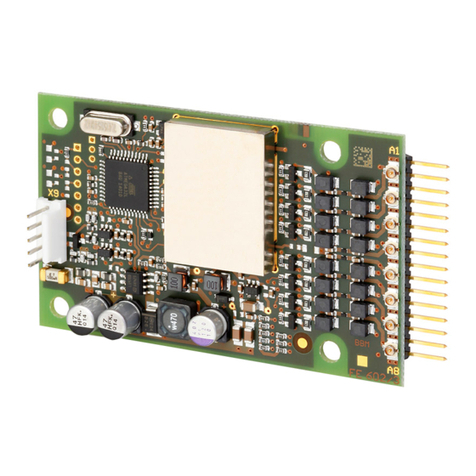
Feig Electronic
Feig Electronic OBID i-scan ID ISC.M02.M8-B installation manual
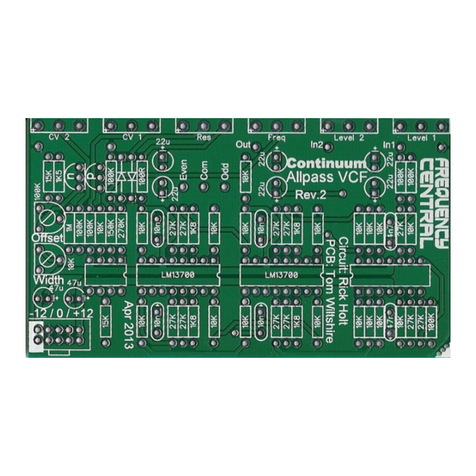
Frequency Central
Frequency Central Continuum Phase Shifter Build documentation
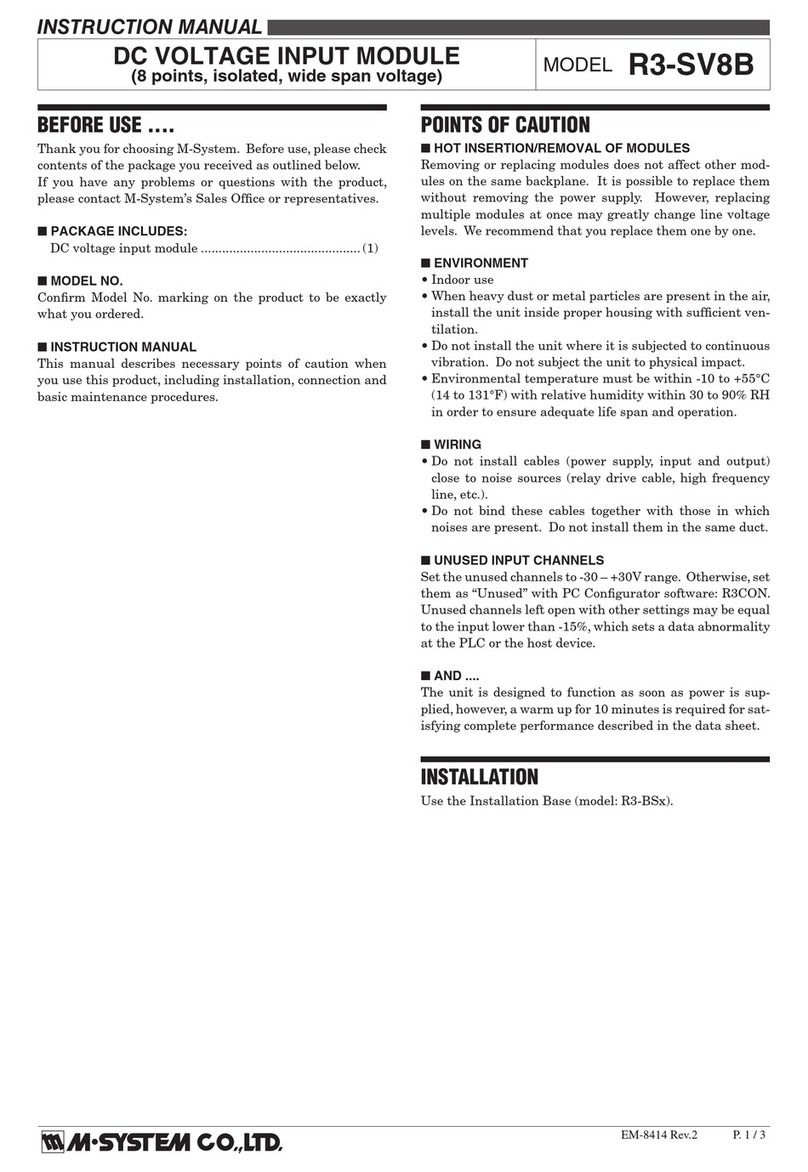
M-system
M-system R3-SV8B instruction manual
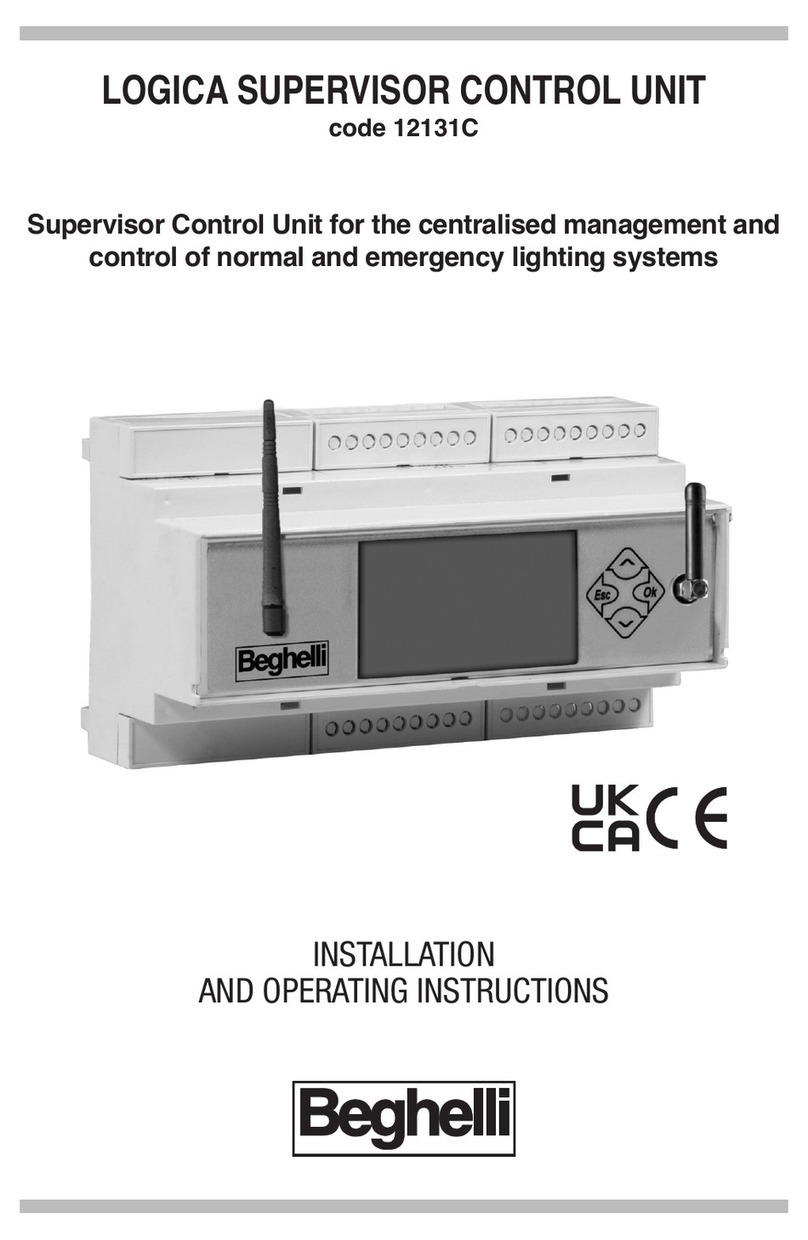
Beghelli
Beghelli LOGICA SUPERVISOR 12131C Installation and operating instructions
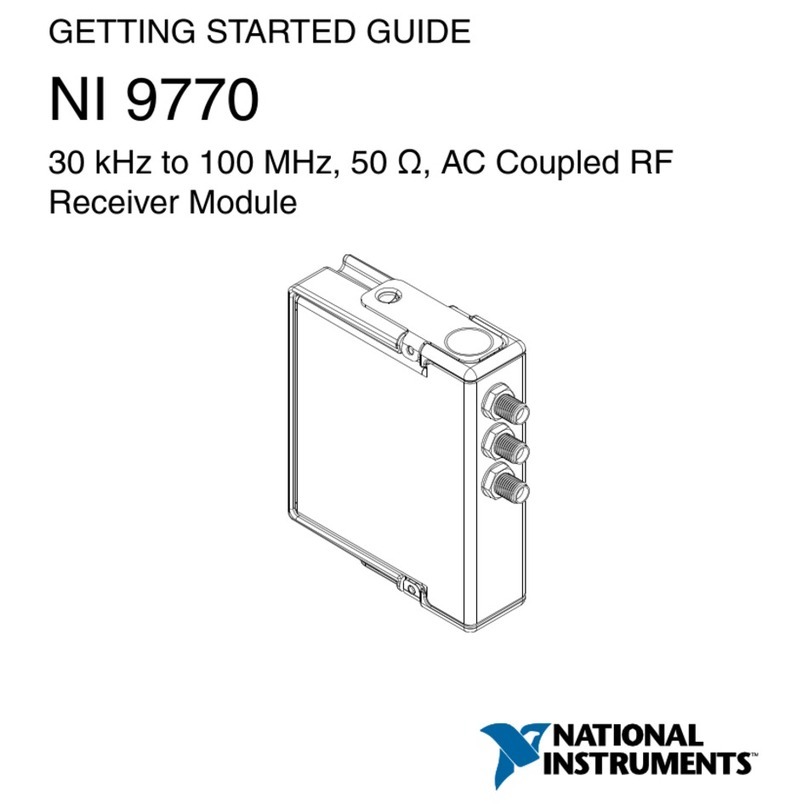
National Instruments
National Instruments NI 9770 Getting started guide

BFT
BFT RIGEL 5 Installation and user manual
